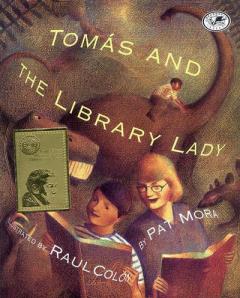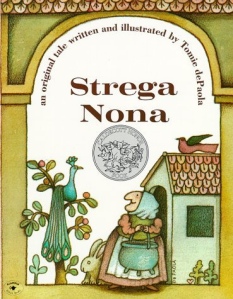This is a story about Tomas, a son of Mexican immigrant workers that travel seasonally from Texas to Iowa for work. Tomas describes the hot and arduous conditions his family works under and also describes the many things he does to entertain himself, namely reading. Tomas discovers the library and makes friends with the librarian. The two share books and language and Tomas uses the library to read about dinosaurs. At night, Tomas reads to his family in English. The day comes when Tomas’ family must leave and the librarian gives Tomas a beautiful book. This book is illustrated by Raul Colon. The illustrations show Tomas lost in the world of books from dinosaurs to snakebirds. The illustrations tend to be a bit too stylistic and cartoony, but they still effectively portray the characters in a somewhat realistic manner giving each character their own unique qualities. The illustrations also assist the narrative of the story. For young readers, this is an enjoyable story describing realistic aspects of migrant workers while also demonstrating that kindness, generosity and love really do make a difference.
Insight:
Upon first reading this book, I liked it. It would have been nice to have more background and context about migrant workers, but I also don’t think this was the author’s intended purpose. In my opinion this book is ok, it leaves something to be desired. However the illustrations by Raul Colon are simply beautiful. He effectively captures the mood of the story and quietly moves the narrative along.
Suggested Library Activity:
Have students create a Spanish/English dictionary using everyday expressions and words such as “hello” and “hola”. Have them illustrate the dictionary and act out the expressions and words with their peers.
Bibliographic Citation:
Mora, P. (2000). Tomas and the library lady. Albuquerque [New Mexico]: Dragonfly Books.
Additional Book Review:
Booklist (Vol. 93, No. 22 (August 1997))
“Ages 4-8. From the immigrant slums of New York City to the fields of California, it’s an elemental American experience: the uprooted child who finds a home in the library. Mora’s story is based on a true incident in the life of the famous writer Tomas Rivera, the son of migrant workers who became an education leader and university president. Far from his home in Texas, the small boy is working with his family picking corn in Iowa. Inspired by the Spanish stories his grandfather (Papa Grande) tells, Tomas goes to the library to find more stories. The librarian welcomes him into the cool, quiet reading room and gives him books in English that he reads to himself and to his family. He teaches her some Spanish words. Then, as in so many migrant stories, the boy must leave the home he has found. He has a new, sad word for her, “adios. It means goodbye.” Colon’s beautiful scratchboard illustrations, in his textured, glowingly colored, rhythmic style, capture the warmth and the dreams that the boy finds in the world of books. The pictures are upbeat; little stress is shown; even in the fields, the kids could be playing kick ball or listening to stories. Perhaps the most moving picture is that of the child outside the library door, his face pressed against the pane. In contrast is the peaceful space he finds inside, where he is free to imagine dinosaurs and wild adventure.”



